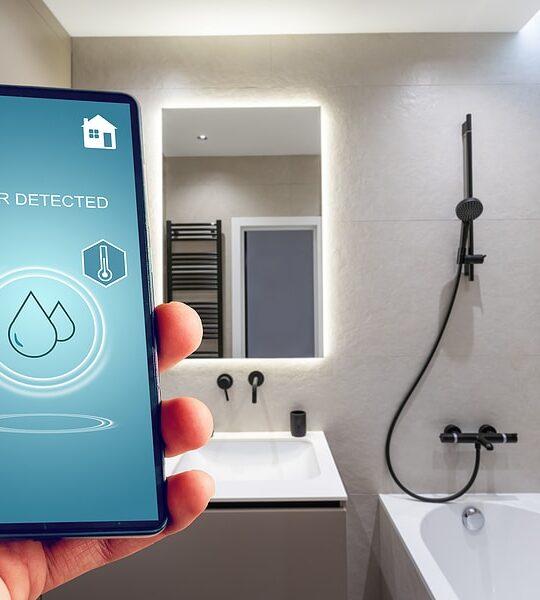Table of Contents
Key Takeaways
- Recognize common signs of bed bugs, including bites, dark spots, and odors.
- Use a systematic approach to inspect sleeping areas for bugs.
- Understanding their habits can help in timely detection and control measures.
Introduction to Bed Bug Identification
Bed bugs are more than just an annoyance—they are skilled hiders, making it vital to identify their presence early. Proper identification can save you from the cumbersome process of complete extermination. Their prevalence in modern urban settings, due to increased travel and dense living conditions, has only complicated matters. Understanding early signs can not only safeguard your home but also diminish the chances of these pests hitching a ride to friends’ and relatives’ places. Recognizing initial indicators can guide you in seeking effective pest control in Weymouth or in your locale.
Outdoor pest control in Weymouth focuses on managing common pests like mosquitoes, ticks, and ants that thrive in coastal and wooded areas. Local services often use eco-friendly treatments to protect both the environment and residents’ health. Seasonal maintenance is essential to keep yards and outdoor spaces pest-free throughout the warmer months.
Globally, bed bugs have become synonymous with unrestful nights and the looming dread of infestation. As these insects become harder to detect, a strategic approach becomes paramount. This guide’s aim is to arm you with knowledge so that you can take decisive action when the first signs of these pests become apparent.
Recognizing Bed Bug Bites
Bed bug bites, although harmless in most cases, can cause significant discomfort and anxiety. They are usually small red welts, resembling mosquito bites, but often in clusters or linear patterns. Unlike other insect bites, bed bug bites are typically found on exposed skin while sleeping, such as the arms, neck, and face. Being watchful enables early intervention and possibly avoids an overwhelming infestation. Interestingly, not everyone reacts the same way to these bites; some may experience severe itching and noticeable marks, while others might show no symptoms at all. This disparity means visual inspection should always accompany bite analysis.
Inspecting Your Sleeping Area
Mattresses and Box Springs
- Bed bugs often reside along the seams and folds of mattresses, and they remain unnoticed during the day. Dark spots or discarded skins are clear indicators. A flashlight can reveal these pest signs under mattress tags and stitching, where they prefer to hide.
- Don’t overlook the box spring; these serve as a significant refuge for them. A thorough investigation around seams and inner crevices is crucial to confirm their presence.
Headboards and Bed Frames
- Attention must be given to headboards and bed frames as they offer shelter in cracks and joints. These are perfect hideouts that shield pests from daylight and human disruption.
- Deep crevices and carved details need careful examination since they provide dark, quiet conditions for bed bugs to thrive. Identification here can help target pest control efforts accurately.
Understanding Their Nocturnal Habits
Understanding bed bugs’ behavior significantly aids in their detection and control. These pests are nocturnal by nature. They emerge from their hiding spots during the night to feed, preferring the safety of darkness. This nocturnal activity complicates their detection as they aren’t easily spotted during daylight hours. Keeping a low-intensity light on at night, staying still, and quietly observing their movement can provide visual proof and inform further action. Awareness of their patterns helps predict their hiding places and anticipate infestations more efficiently.
Examining Unusual Smells
A musty odor, often compared to the scent of spoiled raspberries, is a key indicator of a bed bug infestation. This smell arises from their aggregation pheromones and becomes more pronounced as their population grows. While the smell alone can be indicative, it should always be corroborated with other signs like marks, bites, or visible bugs. Recognizing this unusual odor should prompt a more thorough investigation or perhaps a professional assessment to confirm infestation status and address it appropriately with potential intervention methods.
Observing Fecal Marks
Dark, rust-colored spots are another alarming sign—these are the fecal marks left by bed bugs. They often appear in clusters or streaks on sheets, walls, and even wallpaper. These excrement marks are a result of their feeding, become visible shortly after the parasites digest their blood meals, and serve as a definitive indication of their activity. Recognizing such patterns, particularly when they appear frequently, emphasizes the need for targeted solutions, ranging from deep cleaning to specialized treatments.
Monitoring Furniture and Upholstery
Bed bugs are versatile in their choice of living spaces. Beyond their preference for beds, they invade a variety of furnishings, including couches, curtains, and even behind picture frames. Regular examination of these spaces ensures early capture and control of the problem before it spreads throughout the home. Attention to hidden corners and less obvious furniture ensures a less hospitable environment for bugs, reducing the risk of infestation spiraling out of control. In cases where early signs are detected, engaging pest management professionals can assure complete eradication.
Using Detection Tools
The market offers an assortment of DIY detection tools suitable for those seeking to manage early pest signs independently. Bed bug traps and interceptors can be strategically placed under bed legs or in areas suspected to be infested, capturing bugs at their peak movement times. These tools, while simple, are highly effective in breaking the bugs’ feeding cycle, thereby achieving early detection and management. Employing these devices can offer peace of mind and confirm suspicions before they escalate into larger issues.
Taking swift action upon noticing the signs of bed bugs can prevent escalating problems within your household. The ability to identify indicators such as bites, smells, or dark spots is essential in initiating timely interventions. Whether through the use of detection tools, thorough examination, or seeking professional assistance, prioritizing early detection and management ensures your living space remains pest-free. Staying informed and alert empowers homeowners to handle infestations effectively, minimizing the disruption these pests cause.








